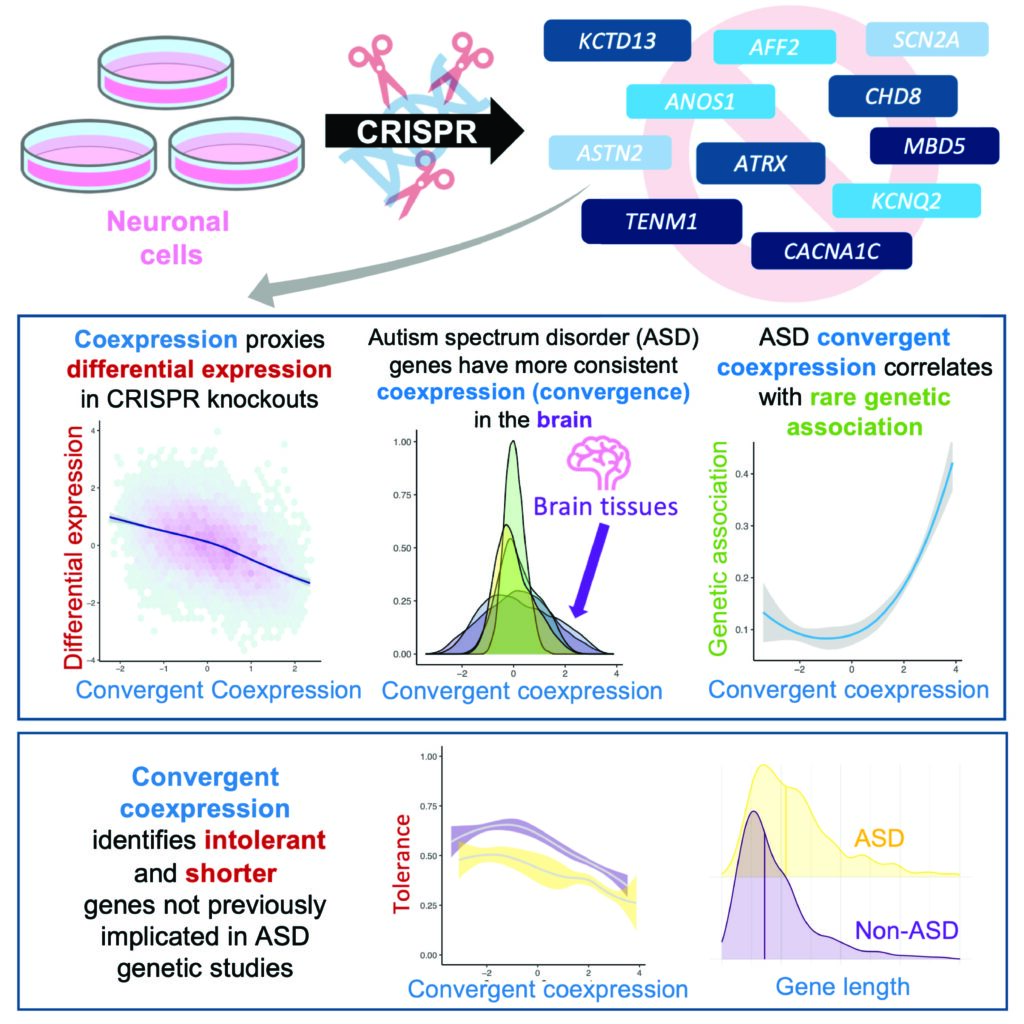Autism spectrum disorder (ASD) is a developmental disorder that affects social interactions and communication. Scientists have discovered that changes in the function of certain proteins due to genetic variations can contribute to the risk of developing ASD. However, understanding how all these genes work together has been challenging. In this study, we analyzed samples from human brain tissue and used a gene-editing technology called CRISPR to study the effects of altering 15 genes associated with neurodevelopment in neuronal cells. We found that patterns of gene activity in the brain tissue samples were closely related to the effects of CRISPR perturbations in the cell models. Specifically, we observed that many genes associated with ASD risk showed similar changes in gene activity, especially in specific brain regions involved in synaptic pathways. The level of convergence, or similarity, in gene activity patterns was also linked to the strength of association with ASD in sequencing studies and differences in gene expression in post-mortem ASD brains. By removing genes with weak evidence of association with ASD, we identified a group of genes that were highly likely to be involved in ASD and had certain characteristics such as being intolerant to mutations and having shorter coding sequences. These findings suggest that analyzing convergent gene activity patterns can help identify new genes related to ASD that may be missed by current genetic sequencing approaches. This study provides a straightforward method to understand the effects of gene editing using CRISPR, reveals the convergence of gene activity among known ASD risk genes in specific contexts, and proposes several new potential ASD risk genes.

